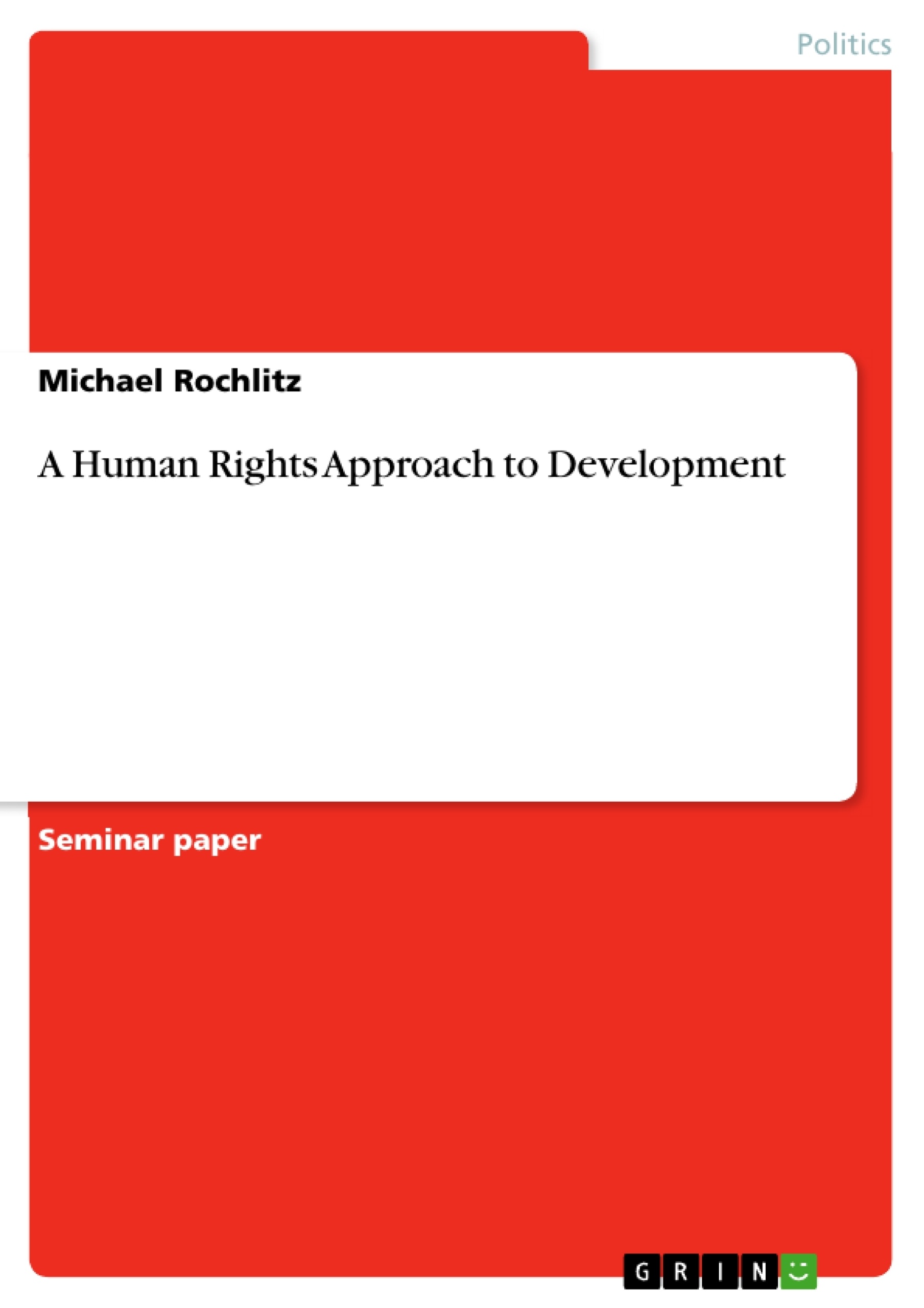In his book “TheComing Anarchy”,the American journalist Robert D. Kaplan paints a dark picture of the situation in many developing countries in the early 1990’s, especially in sub-Saharan Africa. He describes societies marked by disease, overpopulation, poverty and criminal anarchy, where nation-states are increasingly losing importance and life is controlled by mafia-like structures and private armies.
Inhaltsverzeichnis (Table of Contents)
- I. From economic to human development – the emergence of a holistic approach to development politics
- II. Development as Freedom - the theoretical background
- 1) The intrinsic and instrumental importance of freedom
- 2. Human Rights as instruments in the development process
- III. Challenges and Criticism
- 1) The policies of the World Bank and the IMF – a challenge to human development?
- 2. Criticism from the inside
Zielsetzung und Themenschwerpunkte (Objectives and Key Themes)
This paper aims to examine the emergence of a human rights approach to development, exploring its theoretical foundations and practical implications. It specifically analyzes the shift from a purely economic focus to a more holistic view of development that emphasizes human rights and individual well-being.
- The evolution of development policies from the post-war era to the late 1990s
- The theoretical underpinnings of the human rights approach to development
- The critique of traditional development policies, particularly those of the World Bank and IMF
- The relationship between human rights and development
- Challenges and criticisms facing the human rights approach to development
Zusammenfassung der Kapitel (Chapter Summaries)
- I. From economic to human development – the emergence of a holistic approach to development politics: This chapter discusses the historical development of development policies from the Cold War to the late 1980s. It examines how the emphasis on economic growth and industrialization, often seen as the means to uplift developing countries, gave way to a more comprehensive understanding of development that includes social, political, and human rights dimensions. The chapter also discusses the impact of structural adjustment programs implemented by the World Bank and IMF, highlighting their negative consequences on the well-being of developing countries.
- II. Development as Freedom - the theoretical background: This chapter delves into the theoretical foundations of the human rights approach to development. It examines the concept of "development as freedom" as articulated by Amartya Sen, emphasizing the intrinsic and instrumental importance of freedom for human development. This section also analyzes the role of human rights as tools in the development process, highlighting their contribution to improving the lives of individuals.
- III. Challenges and Criticism: This chapter examines the challenges and criticisms facing the human rights approach to development. It explores the tension between the human rights approach and the policies of international financial institutions like the World Bank and IMF. It also delves into internal criticism, such as the "Asian Values claim" and the question of whether the pursuit of human rights and development are always compatible.
Schlüsselwörter (Keywords)
This paper examines the human rights approach to development, exploring its theoretical underpinnings and its practical implementation. Key terms and concepts include: development as freedom, human development index (HDI), structural adjustment programs, World Bank, IMF, Asian Values, human rights, democracy, sustainability, and poverty reduction.
- Arbeit zitieren
- Michael Rochlitz (Autor:in), 2005, A Human Rights Approach to Development, München, GRIN Verlag, https://www.grin.com/document/50749



